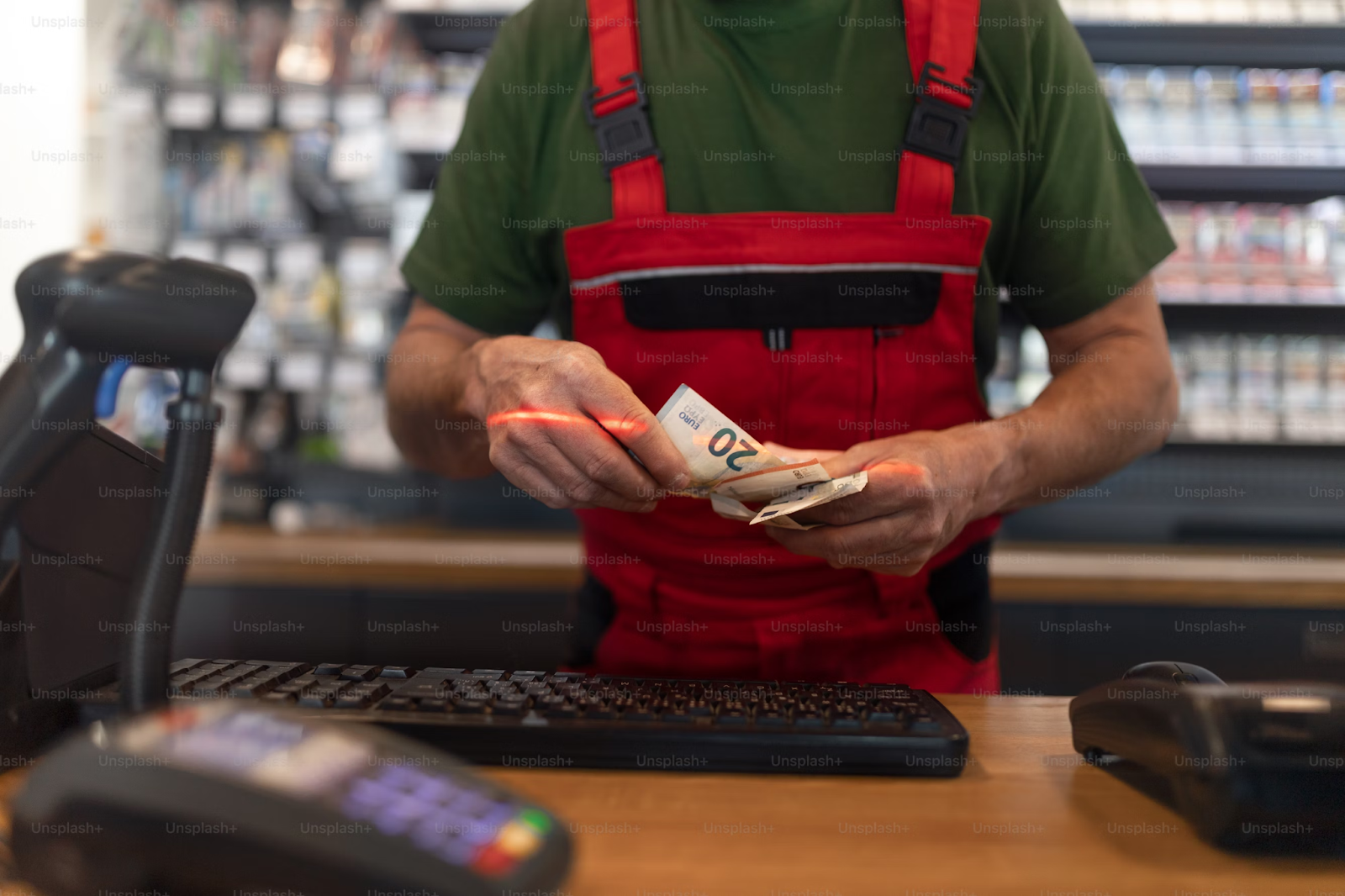POS Fraud Prevention: How to Stop Employee Theft Before Profits Disappear

Your sales may seem steady, but are your profits adding up at the end of the month?
Are you noticing missing inventory, frequent cash shortages, or unusually high discounts and refunds? Could it be an accident? Or… is someone stealing from you?
It’s an uncomfortable thought, but the reality is that employee theft happens more often than you might expect. And what’s worse is many business owners don’t realize it until it’s too late.
But the good news is an advanced POS system can help stop it. It tracks sales in real time. It monitors transactions. It automates audits. As a result, theft gets much harder to pull off and easier to detect, thanks to POS fraud prevention.
This blog breaks down how a POS system acts as your built-in fraud prevention tool. Let’s get into it.
How Employee Theft Happens (And Why You Might Not Notice)

When workers steal from the business they work for, it’s more than just sneaking cash from the register. Employees can steal in many ways. Some methods are subtle, while others involve manipulating records, customers, or even co-workers.
1. Sweethearting

Sweethearting is when employees give discounts, free products, or services to friends, family, or even favorite customers, without approval. For example, a cashier scans only some items in a friend’s shopping cart. Similarly, a salon worker gives a free hair treatment to a regular client. It may not seem like a big deal at first, but over time, sweethearting can significantly cut into your profits.
2. Skimming
Cash skimming is one of the hardest types of theft to detect because the stolen money never enters the system. For example, a cashier pockets money from a cash sale without entering it into the register or enters a lower price in the system and takes the difference. Since the transaction never gets recorded, skimming is nearly impossible to detect without detailed monitoring.
3. Fake Refunds & Returns
Some employees process fake refunds or returns for items that were never actually sold—and then pocket the cash. For example, an employee "refunds" a high-value product but keeps the item or processes a fake return and pockets the refund amount. If businesses don’t regularly check refund records, fake refunds can go unnoticed for months.
4. Voiding Transactions After Receiving Payment
Some employees process a sale, take the customer’s payment, but then void the transaction and keep the money. For example, a service provider charges a customer for a massage, then removes the charge from the system after receiving payment. The customer has already left. So, there’s no way to prove the sale ever happened.
5. Overcharging Customers & Pocketing the Difference

This happens when employees charge customers more than the actual price and keep the extra money. For example, a cashier rings up a $40 item as $50 and keeps the extra $10. Similarly, a bartender charges for a premium drink but serves a regular one, pocketing the difference. Many customers don’t double-check receipts. So, this is an easy way for employees to steal.
6. Misusing Discounts & Promotions
Some employees abuse staff discounts, promotions, or loyalty programs for personal gain. For example, a salon worker uses their staff discount to buy products in bulk and resell them or gives discounts to non-eligible customers to build their personal client base. Even small discounts add up over time, resulting in major losses.
How a POS System Can Reduce Employee Theft
Unfortunately, employee theft is hard to stop. Many businesses struggle with it. It is so because:
- You can’t watch every transaction or track every product by hand.
- Unlike shoplifting, employee theft often happens in small, unnoticed amounts over time, making it hard to detect.
- No solid evidence! Accusing an employee can be risky and damaging to workplace morale.
This is where a cloud-based POS system like OneHubPOS acts as an automated watchdog. This powerful tool tracks every sale and monitors transactions from anywhere. This keeps employees accountable.
Let’s break down the five key ways POS fraud prevention helps prevent employee theft.
1. Real-Time Sales Tracking

With a modern POS system, every sale is recorded in real time. This eliminates opportunities for employees to:
- Underreport sales and pocket the difference
- Delete transactions and take the cash
- Manipulate the numbers at the end of the shift
For you and your managers, real-time tracking means full visibility. You can:
- Spot discrepancies between inventory and sales records
- Identify unusual voids, refunds, or discounts applied by specific employees
- Monitor peak theft hours by analyzing patterns in sales drop-offs
If you notice a sudden spike in refunds every Wednesday night, you can check your retail POS records to see who worked that shift and what was refunded. This way, as POS tracks everything from sales to staff, it stops thefts from draining your profits and eventually leads to better results.
2. POS Transaction Monitoring

By recording transactions, a POS system makes it easier to detect suspicious behavior and identify irregular activities, such as:
- Frequent voided POS transactions by a single employee
- Excessive refunds or discounts issued to the same customer
- Cash drawer mismatches at the end of a shift
These are big red flags! They can’t be ignored. Even if theft isn’t happening, these alerts help you investigate unusual behavior before it becomes a major problem.
For example, if a cashier is voiding 10-15 transactions per shift, it could mean they’re:
- Canceling real sales and pocketing the cash
- Giving free items to friends and family
- Making mistakes due to poor training
3. Automated Audits

Manual audits can be time-consuming, stressful, and prone to human error. You don’t have the time to check every receipt, cash drawer, and inventory record.
A POS system automates this process. So, audits become:
- Faster – Daily, weekly, and monthly POS reports are auto-generated.
- More accurate – There’s no risk of human error or employees “adjusting” numbers.
- Effortless – The system runs in the background, flagging issues automatically.
Here’s how POS fraud prevention works:
- End-of-day sales reports make it easy to reconcile POS transactions and spot missing revenue.
- Inventory tracking matches sales with stock. So, missing products are flagged.
- Cash register tracking monitors who opened the drawer and when.
If your business relies on cash transactions, a small business POS system can automatically count and track cash flow. This prevents employees from skimming money without detection.
No more manual counting. No more missing money. No more guessing.
4. Employee Access Restrictions and Unique Logins

If multiple employees are using the same account, how can you track who did what? The answer is—you can’t. Shared logins are one of the biggest flaws in traditional cash registers and outdated POS systems.
A modern POS system assigns unique login credentials and sets up roles and permissions for each employee. This ensures:
- Only authorized staff can process refunds, apply discounts, or void sales.
- Every POS transaction is tied to a specific employee, preventing anonymous fraud.
- Managers can identify unauthorized actions, like excessive refunds or discounts.
After this, employees know they’re being monitored and think twice before attempting fraud.
For example, if an employee applies 10 discounts in one shift, you can check:
- Was it a genuine promotion?
- Were they giving unauthorized discounts to friends?
- Were they pocketing the difference?
Creating a clear accountability system is a POS fraud prevention strategy that puts a stop to dishonest behavior.
5. Reduced Cash Handling

Cash is the easiest thing to steal. So, if your businesses rely on cash payments, they’re at higher risk of theft.
A POS system that supports contactless payments, like credit cards, mobile wallets, and QR codes, decreases cash transactions, making theft more difficult.
Less cash in the register means:
- Less opportunity for skimming – Employees can’t pocket cash if most payments are digital.
- Fewer fake refunds – Some employees process refunds but keep the cash. This is impossible with digital transactions.
- Easier reconciliation – Digital payments are automatically recorded. No room for manipulation.
Encouraging customers to pay digitally makes payments more secure. Plus, as your customers order and pay swiftly, it improves customer experience and speeds up checkout.
Conclusion: Invest in a POS System and Protect Your Business
Employee theft can drain your profits—but you don’t have to let it happen. A smart POS system gives you the tools to track sales and monitor transactions. A POS system helps prevent theft before it happens.
With real-time tracking, automated audits, and employee accountability, a POS system ensures that every transaction is recorded, every discount is tracked, and every employee is responsible.
So, regardless of the reason, you’ll know about the theft instantly. You won’t have to wait until the end of the month when the losses have already piled up.
If you’re still relying on outdated methods to track sales, now’s the time to upgrade. Protect your business and secure your profits. Book a demo with OneHubPOS and see POS fraud prevention in action!
Roopak Chadha, Director of Business Development with expertise in Business Growth & Strategy, Customer Success, and Product Management. Excels in driving business growth through strategic planning, customer-centric approaches, and effective operational leadership.


